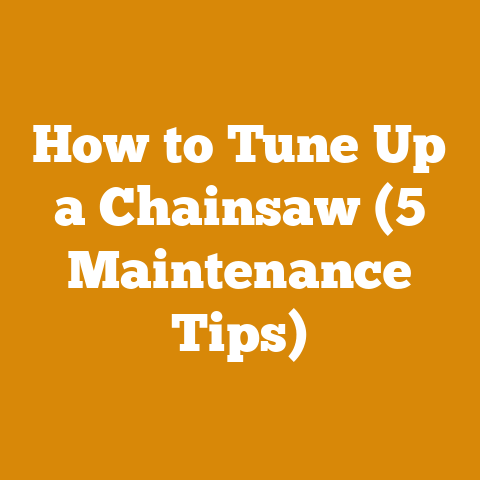Will Copper Kill a Tree (3 Truths Revealed)
Will Copper Kill a Tree? (3 Truths Revealed)
Let’s dive deeper into an intriguing topic that’s been buzzing around the arborist community: will copper kill a tree?
Whether you’re a seasoned lumberjack, an arborist, or just someone who loves trees, this is something you might have wondered about.
So, let’s explore this fascinating question together, revealing the truths and myths behind copper’s effects on trees.
1. Copper as a Tree Killer: Fact or Fiction?
You’ve probably heard the claim that copper can kill a tree.
But is it true?
Let’s delve into the details and separate fact from fiction.
Copper Nails and Trees: An Old Wives’ Tale?
The idea that copper nails can kill a tree is a common belief among gardeners and homeowners.
The theory is that the copper will gradually poison the tree, leading to its death.
But how accurate is this?
The Science Behind It
Copper is indeed toxic to plants in high concentrations.
When absorbed in large amounts, it can interfere with essential processes like photosynthesis and nutrient absorption.
However, for a mature tree, the amount of copper introduced via nails is often insufficient to cause significant harm.
Real-Life Testing
I remember a colleague who decided to test this theory on an old tree in his backyard.
He carefully hammered several copper nails into the trunk, documenting the process over several years.
To his surprise, the tree showed little to no adverse effects.
It continued to thrive, with no noticeable decline in health or growth.
Copper Sulfate and Tree Roots: A Different Story
Copper sulfate is often used to control root growth in sewer lines and can be far more potent than copper nails.
How Copper Sulfate Works
When applied to the soil, copper sulfate dissolves and is absorbed by the tree’s roots.
If used excessively, it can disrupt the tree’s nutrient uptake, potentially leading to nutrient deficiencies and even death.
Case Study: Urban Landscaping
In urban environments where tree roots invade sewer lines, copper sulfate is sometimes used as a preventative measure.
However, improper application can lead to unintended consequences.
I once consulted on a project where copper sulfate was overused around ornamental trees, leading to several trees showing signs of distress, such as yellowing leaves and stunted growth.
2. Proper Use of Copper in Arboriculture
Copper isn’t all bad; it has its place in arboriculture when used correctly.
Let’s explore its beneficial applications.
Fungicide Application: Fighting Disease with Copper
Copper-based fungicides are widely used in horticulture to control fungal diseases like blight and mildew.
Application Techniques
Applying copper fungicides requires precision. Here are some best practices:
- Timing: Apply during the dormant season or at the first sign of disease.
- Concentration: Follow the manufacturer’s guidelines for dilution.
- Coverage: Ensure even coverage on leaves and branches.
Success Stories
A local vineyard owner once shared his experience with me.
He battled persistent mildew on his grapevines for years.
After switching to a copper-based fungicide and following a strict application schedule, he saw a dramatic improvement in vine health and grape yield.
Safety Tips: Handling Copper Products
Safety should always be your top priority when working with chemicals like copper compounds.
- Read Labels Carefully: Always follow the manufacturer’s instructions to avoid accidental overuse.
- Wear Protective Gear: Gloves, masks, and goggles are essential when handling chemicals.
- Store Properly: Keep products in a safe place away from children and pets.
3. Understanding the Risks and Precautions
Before you grab that copper nail or sulfate bottle, let’s talk safety and precautions.
Potential Risks: What Could Go Wrong?
Using copper products without proper knowledge can lead to various risks:
- Environmental Impact: Excessive use of copper can harm soil microorganisms and aquatic life if it leaches into water bodies.
- Tree Health: Misapplication can lead to unintended damage or death of the tree.
Environmental Considerations
Copper’s persistence in the environment means it can accumulate in soil and water over time.
This accumulation can harm beneficial soil organisms and disrupt ecosystems.
Precautionary Measures: How to Use Copper Safely
- Limit Usage: Only use copper solutions when absolutely necessary.
- Consult Experts: When in doubt, seek advice from certified arborists or horticulturists.
- Test Soil: Consider testing soil pH and nutrient levels before applying copper products.
Equipment Requirements and Prerequisite Knowledge
Before experimenting with copper, ensure you have the right equipment and knowledge:
- Knowledge of Tree Species: Different trees react uniquely to copper.
Research your specific species before application. - Protective Equipment: Gloves, goggles, masks, and appropriate clothing are non-negotiable.
- Proper Tools: If applying nails or using liquid solutions, ensure you have the necessary tools like hammers, sprayers, or measuring devices.
Common Questions and Concerns
Let’s tackle some burning questions you might have about using copper on trees:
Q: Can copper pipes harm nearby trees?
A: Generally, buried copper pipes won’t affect trees unless there’s significant corrosion or leakage.
However, it’s always wise to monitor for any signs of distress in nearby vegetation.
Q: Are there safer alternatives to using copper sulfate for root control?
A: Yes!
Consider mechanical root barriers or regular root pruning to manage growth without chemical intervention.
Q: Is it legal to use copper nails to kill trees on my property?
A: Always check local regulations before taking action that may harm trees, even on private property.
Some areas have strict rules about removing or damaging trees.
Troubleshooting Tips and Best Practices
If you notice damage after using copper products, here are some steps you can take:
- Water the Tree Thoroughly: Diluting the soil can help mitigate toxicity by washing away excess copper.
- Monitor for Signs of Recovery: Look for new growth as an indicator of resilience.
Healthy new leaves suggest the tree is overcoming stress. - Seek Professional Help: If the tree continues to decline despite your efforts, consult an arborist for intervention strategies.
They can provide tailored solutions based on your tree’s specific needs.
Concluding Thoughts and Next Steps
In our chat today, we’ve uncovered some truths about copper’s role in tree health.
While it’s not the tree killer some claim it to be, caution is key.
Use copper responsibly, understand the specific needs of your trees, and never hesitate to seek expert advice when unsure.
By now, you should have a clearer understanding of when and how to use copper safely around your trees.
Remember that every situation is unique, so take the time to assess your specific circumstances before proceeding with any treatment.
FAQs
Let’s wrap up with some frequently asked questions:
Q: How long does it take for copper nails to affect a tree?
A: If they impact the tree at all, it could take months or even years to see any visible effect due to the slow absorption rate of solid copper.
Q: Can I use copper sulfate on fruit trees?
A: It’s possible but requires careful application to avoid damaging the tree or contaminating the fruit.
Always follow guidelines specific to fruit-bearing species.
Q: What’s the safest way to remove unwanted trees without using chemicals like copper?
A: Employ professional services for safe removal without risking environmental harm.
Mechanical removal methods are effective and environmentally friendly.






